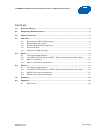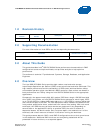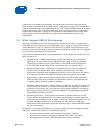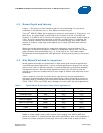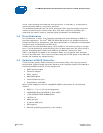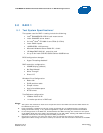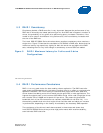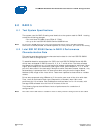
Intel
SSD DC S3500 Workload Characterization in RAID Configurations
White Paper December 2013
6 329903-001US
A selection of workloads that represent both best-case performance and real-world
performance are presented in this white paper. These scenarios give the IT professional
a better understanding of the capabilities of the Intel
®
SSD DC S3500 Series drive when
used in conjunction with a hardware RAID controller. More importantly, it helps the IT
professional understand a variety of workloads and circumstances in which Intel SSD
technologies will accelerate those workloads and provide business value for their
organization.
4.1 What Impacts SSD IO Performance
Although Intel SSDs excel in delivering random read and write IOPS, it is important to
remember that more IO activity at the application level results in higher CPU utilization
in the applications’ host. In addition to the abilities of the SSD, IO performance in any
particular situation is dictated by how the particular application scales, and the IO profile
of the workload produced by the application.
The following workload-specific characteristics have a direct impact on the ability of the
SSD to produce IO:
• Read/Write Mix – NAND programming (writes) and read timing (reads) differ
significantly at the hardware level. Because of the higher controller overhead
required for processing writes, the number of read IOPS are often higher than
write IOPS. Real world workloads are most often a mix of read and write.
• Random/Sequential Mix – IOPS can vary depending on the ratio of sequential
versus random accesses. With higher random write workloads, more data
movement and greater data management activity occurs in the drive. As random
write activity increases, the IOPS serviceable to the host typically decreases.
• Queue Depth - Higher queue depths typically allow the SSD to generate higher
IOPS through concurrent processing of commands. However, as the queue size
increases, latency will be negatively impacted.
• Random Transfer/Block Size - With a smaller transfer size, the SSD controller has
to work harder to maintain the logical-to-physical address mappings. In addition,
the smaller the transfer size, the larger the logical space needed for its mapping.
Once logical space constraint is reached, background re-mapping will take place.
These frequent events slow IOPS.
• Available Spare Area – A larger spare area directly impacts random write and
mixed read/write performance by minimizing the frequency of reclaim activities
and freeing up processor cycles to support more host read/write requests. You can
increase the spare area by over-provisioning the SSD. See the Intel® High
Performance SATA Solid-State Drive Over-Provisioning an Intel® SSD White Paper
for more information.
In summary, the following principles of storage are often true concerning queue depth,
block size, randomness, and per-IO transactional latency:
• As queue depth increases, IOPS increase, and latency increases.
• As block size increases, throughput increases, and latency increases.
• As randomness increases, IOPS decreases, and latency increases.





